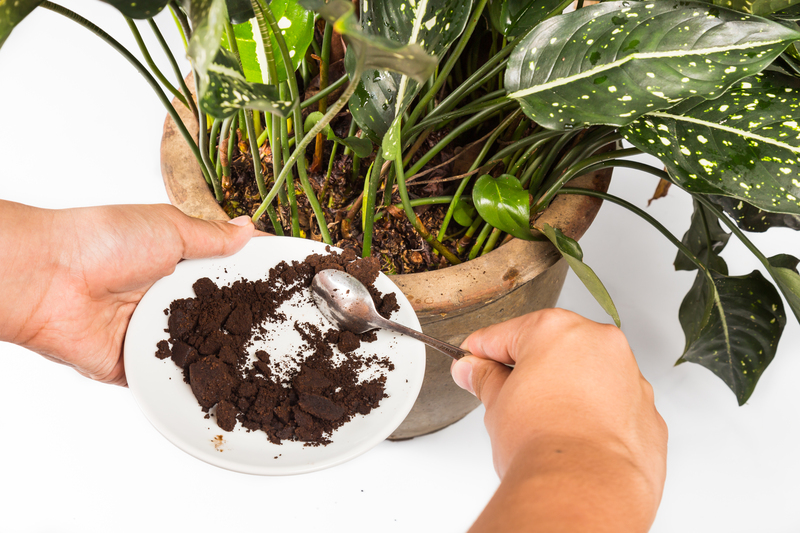Three Game-Changing Tips for Optimal Weed Control
Posted on 26/05/2025
Three Game-Changing Tips for Optimal Weed Control
Are you tired of battling tenacious weeds in your garden or lawn? Achieving optimal weed control is a common goal for homeowners, gardeners, and landscapers who value a neat and healthy outdoor space. Uncontrolled weed growth can quickly take over, choking desirable plants and reducing curb appeal. In this comprehensive article, we'll unveil three game-changing tips for successful weed management, using science-backed strategies and practical advice that anyone can apply. Ready to reclaim your green oasis? Let's dive in!

Understanding the Weed Challenge: Why Effective Weed Management Matters
Before exploring expert weed control tips, it's essential to grasp why intelligent weed management is so critical. Weeds compete aggressively with other plants for nutrients, sunlight, and water. Their presence can:
- Reduce crop yields and ornamental value in gardens
- Host disease and insect pests that harm desired vegetation
- Deplete soil nutrients, making it harder for your favorite plants to thrive
- Increase workload for maintenance and lawn care
- Contribute to allergies and skin irritations
Addressing invasive weeds proactively with proven strategies ensures a robust, low-maintenance landscape. Now, let's discover three innovative weed control techniques that can transform your approach!
Tip 1: Establish a Strong Foundation With Preventative Weed Barriers
The Power of Mulching and Landscape Fabrics
One of the most effective and environmentally-friendly methods for optimal weed suppression is using physical barriers. Strategic application of mulch or landscaping fabric starves weeds of light and makes it difficult for new seeds to germinate. Consider these proven options:
- Organic Mulches: Materials like shredded bark, wood chips, straw, or compost can be layered (2-4 inches deep) around trees, shrubs, flower beds, and vegetable gardens. They not only block sunlight from reaching weed seeds but also improve soil quality as they decompose.
- Synthetic Landscape Fabrics: These allow water and nutrients through while creating a long-lasting barrier against weeds. Cover the fabric with a thin layer of mulch or decorative stones for aesthetic appeal and added protection.
Pro Tips for Success:
- Always clear existing weeds before laying mulch or fabric.
- Extend mulch/fabric past plant crowns to cover open soil where weed seeds may land.
- Regularly inspect for rips, gaps, or exposed areas and repair them promptly.
Mulching is a simple yet transformative strategy--not just for weed control but for soil moisture retention and temperature regulation as well. This game-changing tip forms the cornerstone of low-effort, sustainable weed management.
Tip 2: Outcompete Weeds With Dense Plantings and Smart Turf Management
Harness the Power of Plant Competition
Another crucial approach for optimal weed control in lawns and garden beds is reducing the open space available for invaders to take root. The principle is simple: the denser your desired plants, the less opportunity weeds have to encroach.
- Lawns: Maintain turfgrass at the recommended mowing height for your variety (usually 2.5-4 inches). Taller grass shades the soil surface, preventing weed seeds from germinating and giving your grass a competitive advantage.
- Flower and Vegetable Beds: Practice intensive planting with closely spaced crops or flowers. Ground covers like creeping thyme, sedum, or vinca can form living carpets that suppress weeds.
- Crowd Out With Annuals and Perennials: Fill gaps with fast-growing annuals or tough perennials to create a thick canopy that limits weed establishment.
Smart turf management also includes practices like regular overseeding, aeration, and proper fertilization to keep desirable grasses thick and healthy. Remember--a healthy, dense turf is your best line of defense against weed invasion!
Tip 3: Apply Targeted, Timely Weed Control Treatments
Precision Matters in Modern Weed Management
When physical and cultural barriers are not enough, combining them with targeted chemical or organic weed control methods can provide the ultimate balance. But for optimal results, timing and selectivity are everything!
- Pre-emergent Herbicides: These are applied before weed seeds germinate (often in early spring or late fall). They form a protective barrier in the upper soil layer, blocking common invaders like crabgrass, dandelions, and annual broadleaf weeds. Make sure to water in thoroughly after application.
- Post-emergent Herbicides: Best for tackling weeds that have already appeared. Choose selective products for lawns (which kill broadleaf weeds without harming turf) and non-selective options (for patios, walkways, and borders).
- Organic and Natural Solutions: Vinegar-based sprays, boiling water, or concentrated citrus oils can be effective for spot treatment in small areas, minimizing the impact on your environment.
Important Considerations:
- Always read and follow the label instructions for any weed control product.
- Apply treatments when weeds are young and actively growing for maximum efficiency.
- Target weeds on calm, dry days to prevent drift onto desirable plants.
- Rotate weed control methods each season to reduce resistance and maintain long-term efficacy.
Combining preventative, cultural, and targeted weed control ensures you stay one step ahead of aggressive weeds all year round.
Advanced Tips for Weed Control Success
Get to Know Your Enemy
Effective weed identification is the secret weapon of successful gardeners. Are you dealing with annual or perennial weeds? Taproot or fibrous-rooted varieties? Early identification allows for tailored approaches, minimizing labor and cost. Keep a reference guide handy--or use plant ID apps for quick analysis.
Sustainable, Organic Approaches
For those seeking environmentally-friendly solutions, consider integrating the following into your routine:
- Hand-pulling weeds after rainfall, when the soil is soft for easier removal
- Encouraging natural weed predators (such as ground beetles and birds)
- Using cover crops like clover or ryegrass between growing seasons to enrich soil and prevent weed growth
- Avoiding over-tilling, which can bring dormant weed seeds to the surface
Common Weed Control Mistakes to Avoid
- Ignoring Early Warning Signs: Don't wait until weeds are rampant. Address new growth promptly to reduce future infestations.
- Overusing Chemicals: Relying exclusively on herbicides can harm soil health and beneficial organisms. Use them wisely and as part of an integrated program.
- Under-Mulching: Too-thin mulch layers let sunlight penetrate, allowing weeds to sprout.
- Improper Mowing: Cutting lawns too short weakens grass and encourages weeds.

Conclusion: Take Control and Enjoy a Weed-Free Landscape
Achieving optimal weed control demands a comprehensive, multi-pronged approach. By integrating these three game-changing weed prevention strategies--using mulch and barriers, promoting dense plantings, and applying timely, targeted treatments--you'll create a healthier, more flourishing garden or lawn. Remember, the keys are diligence, adaptation, and early intervention. Stay observant, keep your landscape resilient, and enjoy a lush, weed-free environment--all season long!
For continuous success, revisit your weed management plan every year, incorporating new knowledge and innovative products. With these tips in your arsenal, you're well on your way to mastering the art of effective weed control.
Frequently Asked Questions About Weed Control
What is the best time to control weeds?
Early intervention is crucial--apply pre-emergent herbicides in early spring before weed seeds sprout, and address perennial weeds before they go to seed in late summer or fall.
Can I combine organic and chemical weed control methods?
Yes! Many homeowners combine organic strategies like mulch and hand-pulling with targeted use of herbicides for tough, persistent invaders. This integrated approach balances effectiveness and environmental responsibility.
Should I pull weeds by hand?
Hand-pulling is ideal for small areas or individual weeds, especially after a rain. Ensure you remove the entire root to prevent regrowth.
Ready to win your battle with weeds? Apply these game-changing tips and watch your lawn or garden thrive!



